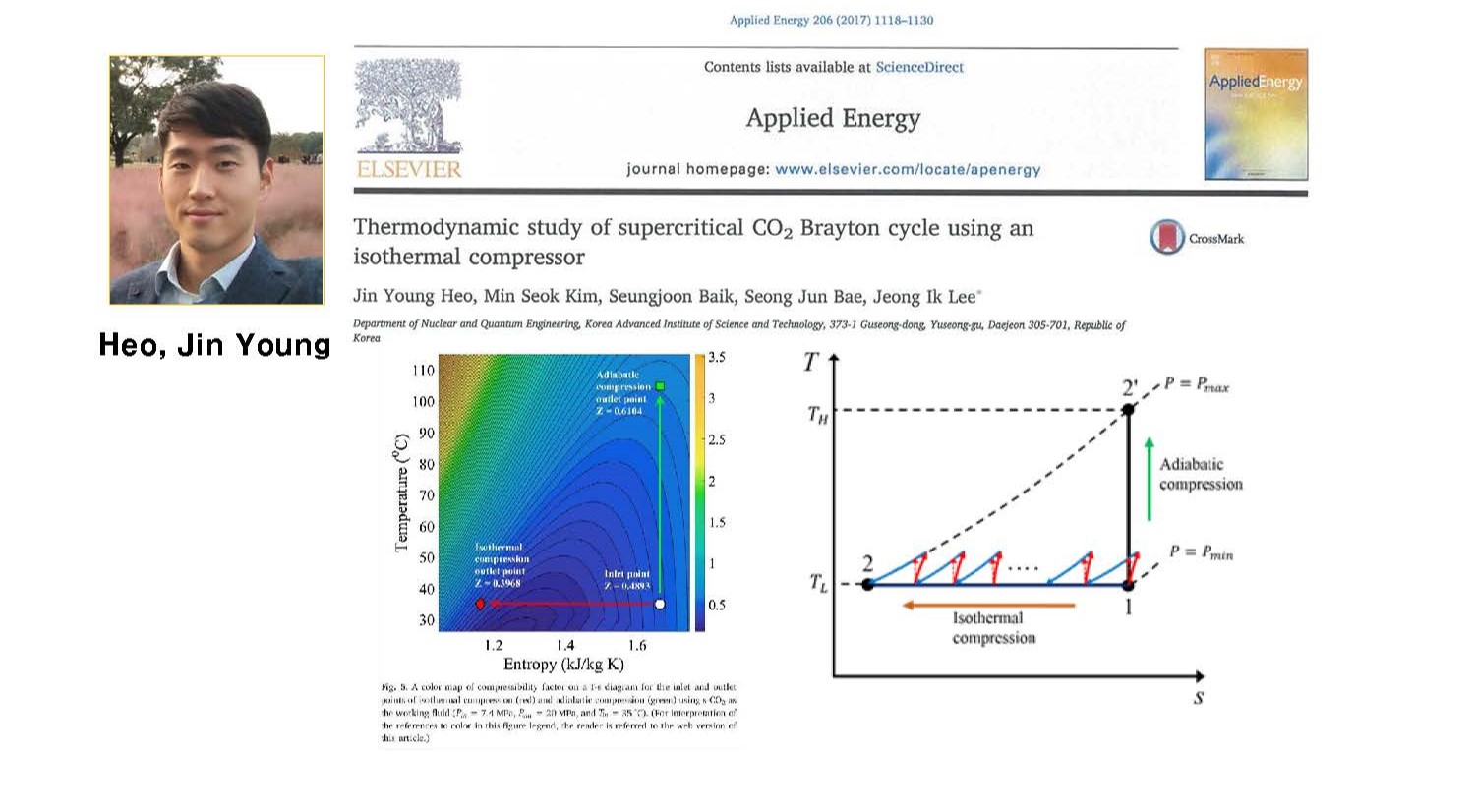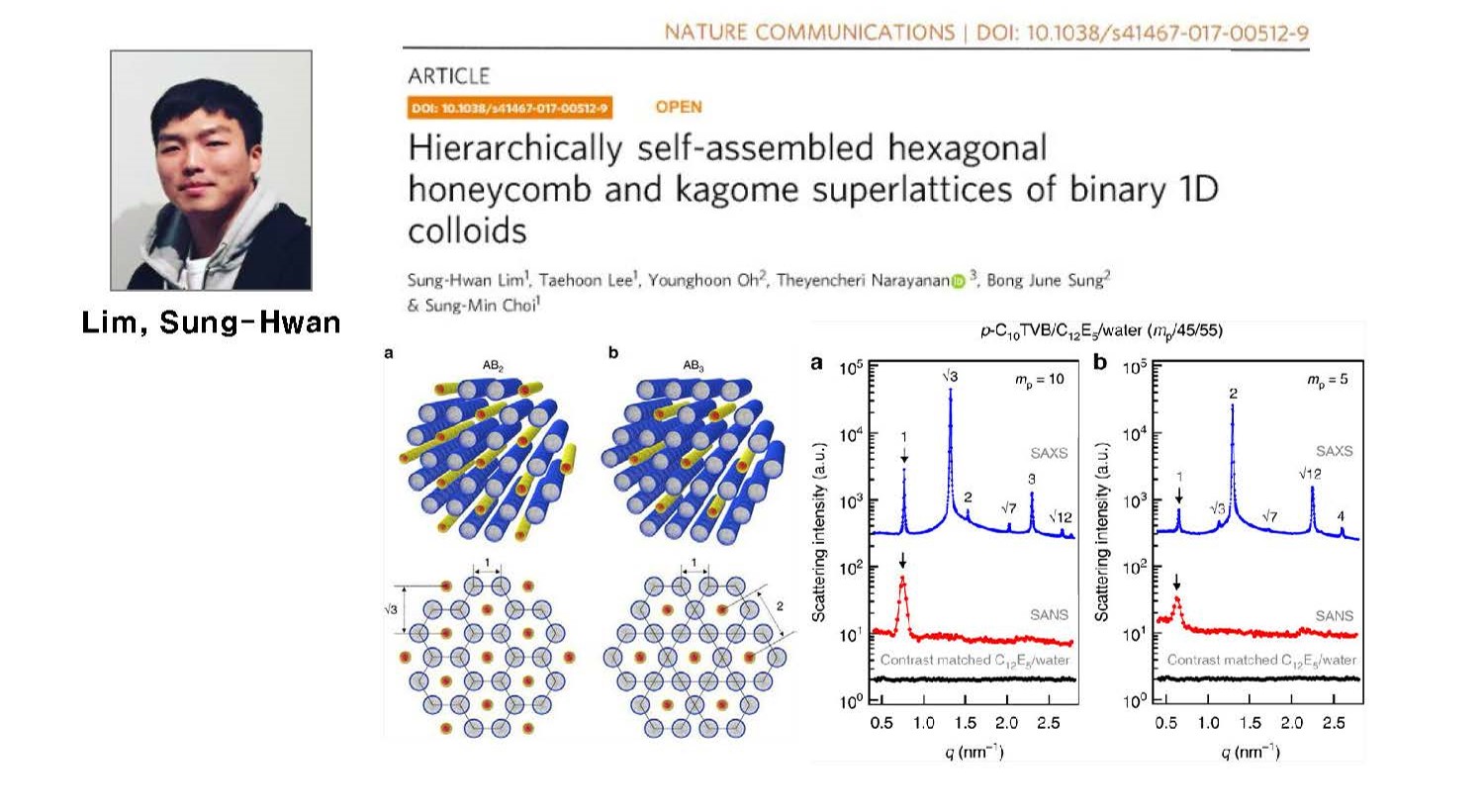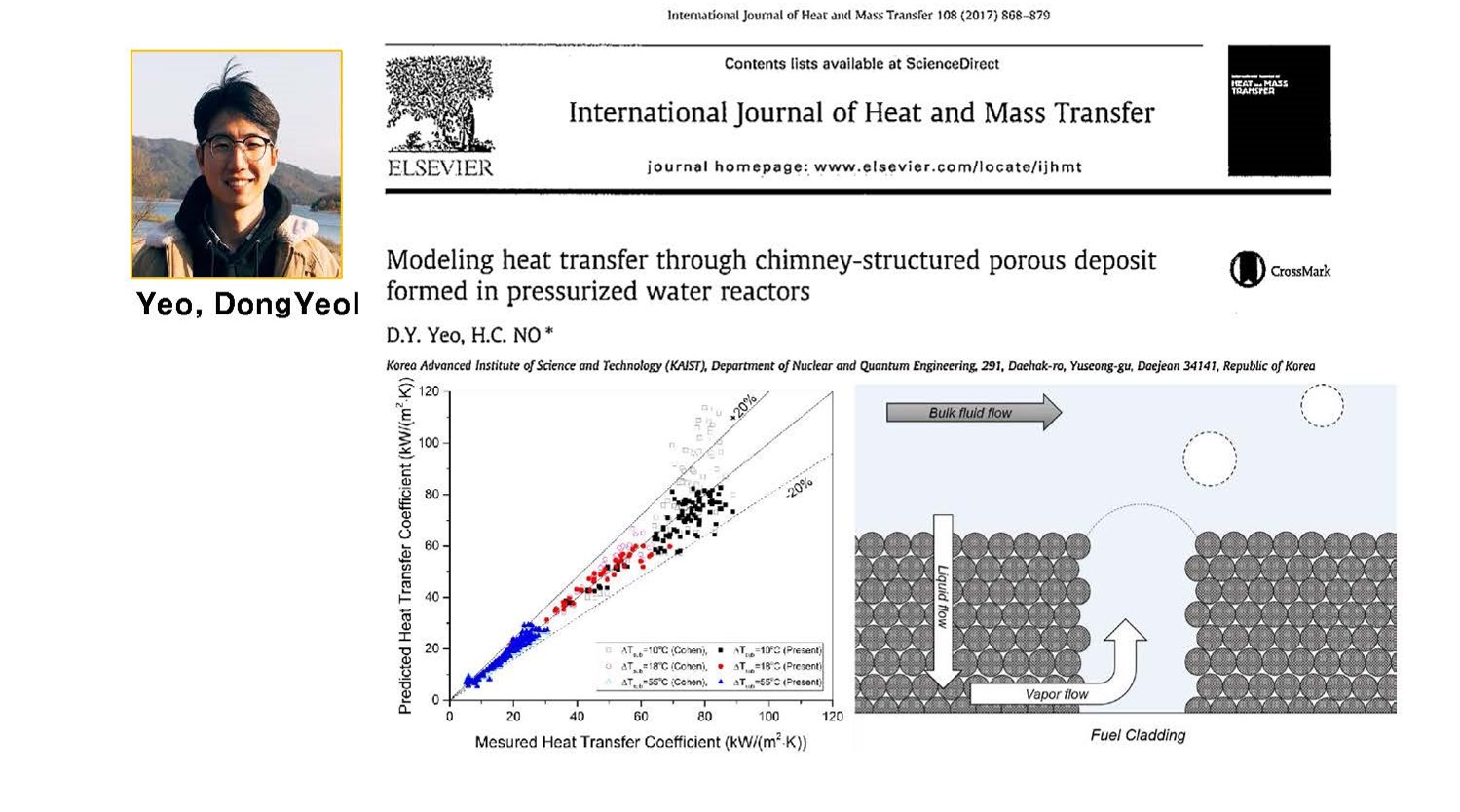2017-12-19



Jin Young Heo, a master student in Nuclear Power and Propulsion Lab, under the supervision of Prof. Jeong Ik Lee, Sung-Hwan Lim, a Ph.D student in Neutron Scattering & Nanoscale Materials Lab, under the supervision of Prof. Sung-Min Choi, and Dongyeol Yeo, a Ph.D student in Nuclear & Hydrogen System Lab, under the supervision of Prof. Hee Cheon No, won the NQe 2017 Best Paper Award.

Jin Young Heo (Nuclear Power and Propulsion Lab, under Professor Jeong Ik Lee) has published a paper in Applied Energy on the research 'Thermodynamic study of supercritical CO2 Brayton cycle using an isothermal compressor'. It focuses on improving the performance of the supercritical carbon dioxide power cycle (s-CO2 cycle) by applying the isothermal compressor to the existing system. One of the main advantages of this system is the reduction of compression work by compressing CO2 near the critical point, and using the isothermal compressor can maximize this benefit. Although the isothermal compressor remains under development for the s-CO2 cycle, the research suggested a new framework to evaluate the performance changes compared to the reference layouts. Due to the high efficiency of the s-CO2 cycle, it is expected to contribute greatly to various energy fields including nuclear, waste heat recovery, geothermal, concentrated solar power, and natural gas.

Sung-Hwan Lim (Neutron Scattering and Nanoscale Materials Lab, Prof.
Sung-Min Choi) has developed a binary superlattice of 1D nanoparticles with two
different diameters for the first time (S.-H. Lim and S.-M. Choi et al., Nature
Communications, 8, 360, 2017). Synthesis
of binary nanoparticle superlattices, which may exhibit new emerging properties
through synergetic coupling between different types of nanoparticles, has
attracted attention for a broad spectrum of potential applications as well as
its own scientific merit. However, the binary superlattices reported so far
have been limited to the spherical nanoparticles of two different sizes, and
the studies on the binary 1D nanoparticle superlattices is at an early stage.
Prof. Sung-Min Choi research team has succeeded in fabricating binary 1D
nanoparticle superlattice by using an 1D nanoparticles and a cylindrical
micellar system with different diameters. Small angle neutron and x-ray scattering
measurments showed that the binary 1D nanoparticle superlattices of two
different symmetries (AB2 and AB3) can be obtained by tuning particle diameter
and mixing ratios. The maximaization of free volume entropy is considered as
the main driving force for the formation of superlattices, which is well
supported by the theoretical free energy calculations. This approach provides a
route for fabricating binary superlattices of inorganic 1D nanoparticles such
as metallic, semiconducting, or magnetic nanorods, which may be applicable for
broad spectrum of applications including solar cell, catalyst and molecular
sensor.

Dongyeol Yeo (Ph.D student in Nuclear and Hydrogen Systems Laboratory, Professor Hee Cheon No) has developed a model for the boiling in corrosion deposits on nuclear fuel rods and published the results in “International Journal of Heat and Mass Transfer”. As observed in previous researches, this paper has suggested a model assuming that the boiling phenomenon in the corrosion deposits is analogous to the boiling in the hot pot, which generates bubbles during boiling. In addition, the model was used to predict the effect of the boiling on the heat transfer of the fuel rod. This model might be used to predict the temperature of the fuel rod and the behavior of surrounding coolant when there is a corrosion deposit. As a result, it will contribute to understanding and preventing the issues of fuel rod damage and power distribution abnormality which are known to be caused by corrosion deposit.